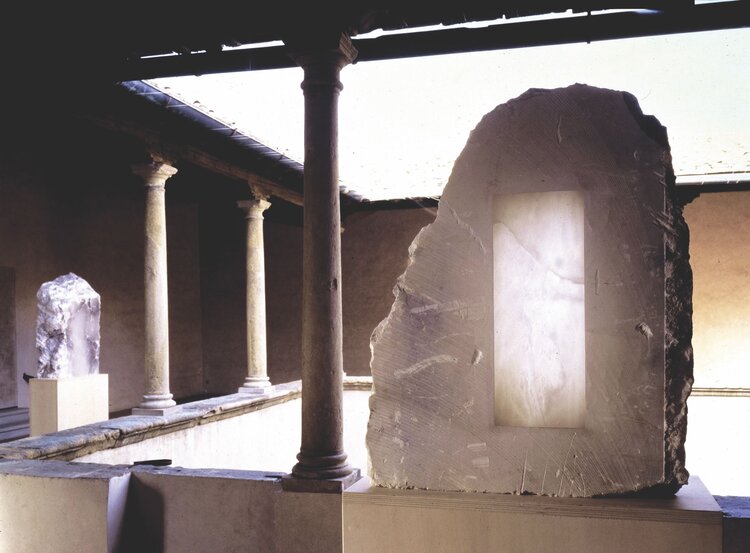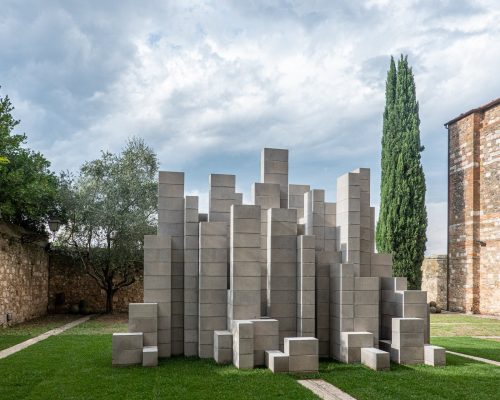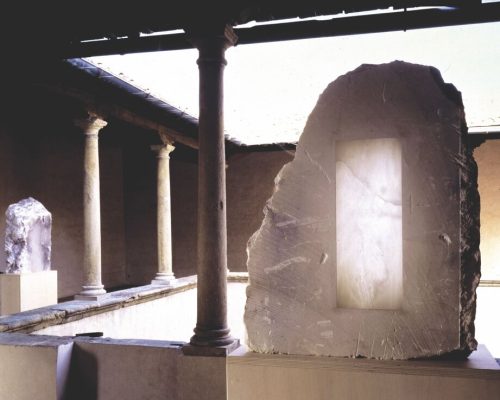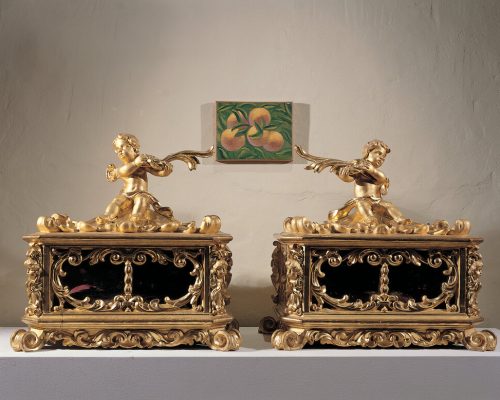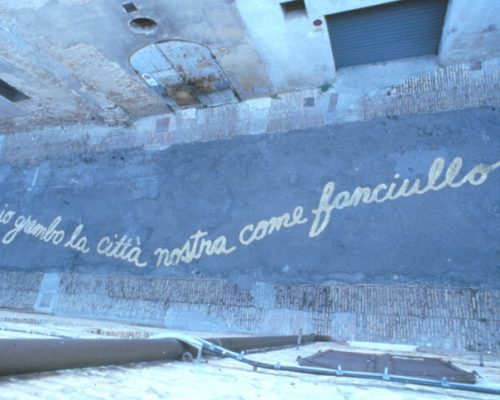The edition II di Art to Artcurated by Jan Hoet and Giacinto di Pietroantonio, took on more and more of its own characteristics, and the invited artists continued to act in their contemporary way in relation to cultures and traditions of the past. Anish Kapoor intervened with a large marble sculpture in front of the Church of San Giusto and alabaster sculptures at the Pinacoteca di Volterra. Sol LeWitt created his own installation with modular concrete blocks measuring 4 metres by 6 metres in the courtyard of the Archaeological Museum in Colle Val d'Elsa. Salvo proposed the installation of his works in the Pinacoteca Civica di Casole d'Elsa, while Gilberto Zorio constructed his intervention with the help of a master glassmaker who blew the objects on site, which the artist then installed in the mighty Fortress of Montalcino. A San Gimignano, Marco Cingolani placed lead glazing on some views of the city; Jessica Diamond brought the colour of shadows to Via Berignano and Piazza delle Erbe; Amedeo Martegani in the garden of the fortress gave voice to the voices of the well.
This edition was also a bridge to the Piedmont region, which, thanks to the Circolo Palazzo Giovine in Alba, stretched as far as Sunrise e Baroloamong the scents and smells of the Langhe. The special setting saw David Tremlett create their own work expressly for the Castello di Falletti di Barolo and Piero Gilardi a work divided between the Church of San Domenico and the Social Theatre in Alba.
Edited by Jan Hoet and Giacinto Di Pietrantonio
“La nostra adesione parte dalla convinzione che la policentricità della Toscana, e la sua capacità di essere una Toscana di Toscane in cui il rapporto tra tradizione e contemporaneità, tra paesaggio ed impatto umano, tra natura e cultura abbia delle grandi necessità di trovare nuovi e stimolanti rapporti, e pur essendo un valore di per sé, trovi, soprattutto in occasioni come Art to Art, la radice vera per riproporsi come elemento trainante e di aggiornamento della nostra tradizione culturale.”
Ma per entrare più specificamente in questa mostra Art to Art, penso che essa non voglia parlare solo dell’arte che guarda l’arte o perlomeno io non vi vedo solo questo, ma il fatto che l’arte contemporanea deve essere mostrata anche in posti differenti dal museo d’arte contemporanea che è un luogo separato.
There is also the idea that all art is contemporary and that when it manifests itself, it has no historical time. In fact, art that looks at art is realised in every work, even in the one that apparently excludes it. In this Duchamp's urinal is a good example, because by calling this work 'Fountain' he was thinking of it and relating it, albeit ironically, to all other fountains, from the Trevi to Versailles, and at the same time the relationship with Ingres' Woman at the Bath is not lost on him.
But to do this, he would put a banal object in a museum or gallery, and this is why I say that Arte all'Arte should also and above all be seen as a method of display, that is, exhibiting contemporary art in places characterised by the art of the past, this past that is returning today. Indeed, it is a different thing to show a work of contemporary art between the white walls of a gallery than in an archaeological museum Sol LeWitt, in an ancient art gallery Salvo, in a baroque church Kapoor, in a medieval fortress Zorio as on this occasion.
Giacinto di Pietroantonio, from Arte All'Arte II, 1997

